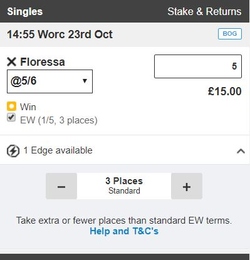 The number of markets that you can bet on with horse racing is much more limited than that of say, football for example; but the traditional sport of gentlemen has been able to cope just fine in the modern day even with a limited market presence, and it’s still one of the biggest sports for any of the top bookmakers both in terms of betting volume and net wins.
The number of markets that you can bet on with horse racing is much more limited than that of say, football for example; but the traditional sport of gentlemen has been able to cope just fine in the modern day even with a limited market presence, and it’s still one of the biggest sports for any of the top bookmakers both in terms of betting volume and net wins.
Each way betting is one of the most popular bets that you can choose in this market. It’s a market that was first created for horse racing and we would argue that it’s still most commonly associated with the sport.
Even though it is a common bet, it’s still one that a lot of punters don’t understand. The first thing to note is that the bet is actually broken down into two parts; the place and the win. This means that you’re essentially placing two bets that then combine into one.
One thing to clear up before we move on is the stake that you place. Technically if someone said “I’ve bet £10 each way” then this would mean that they had bet £10 on the win and £10 on the place. Their total stake for this bet would therefore be £20.
Part 1 – The win
The first part of the bet is the win. It’s as simple as can be in that you bet on the horse you think will win the race. Any returns from this bet are paid in full from the price that you took when placing the bet. If you took Starting Price, then this determined after the race has started.
Part 2 – The place
The place is where you bet on the horse to finish within a certain number of top spots outlined by the bookmaker prior to the start of the race. The number of places that are paid out is based on the number of horses that are in the race.
The place bet will pay out at a fraction of the odds that you got at the start of the race. A typical example would be ¼ of that price. So, if you took odds of 10.00 for the horse, the place price would be 2.50, which is ¼. Again, the fraction is based on the number of horses included in that race and might vary between bookies.
Here is a general overview of the place terms based on the number of horses in the race and the type of race that is running.
| No. of Runners (at the off) | Race Type | Place Terms |
|---|---|---|
| 2 – 4 | All Races | Win Only |
| 5 – 7 | All Races | ¼ 1st 2 finishers |
| 8 – 11 | All Races | 1/5 1st 3 finishers |
| 12 – 15 | Handicap | 1/4 1st 3 finishers |
| 12+ | Non-Handicap | 1/5 1st 3 finishers |
| 16+ | Handicap | 1/4 1st 4 finishers |
It is worth noting that these are set out as industry guidelines and whilst most races will follow this table or something very similar, bookmakers have been known to offer enhanced places and even larger payouts for some bets. Races like the Grand National are often where promotions like this will run.
Example
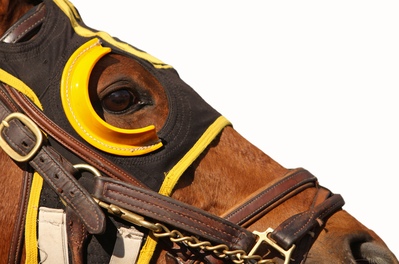 You place a £10 each way bet on a horse that is priced at odds of 10.00.
You place a £10 each way bet on a horse that is priced at odds of 10.00.
This means that your total stake is £20, with £10 on the win and £10 on the place.
The race includes 9 runners and is not a handicap race.
From the table we can see that the place bet pays 1/5 of the odds and top 3 places.
Scenario 1 – Horse wins
The horse wins the race, which means that we win both the win bet and the place bet. The win bet wold be £10 x 10.00, returning £100 in total.
The place is 1/5 of the price, meaning that adjusted odds are 2.00. We have £10 on this, meaning returns are £20 for this bet.
Total returns = £120
Scenario 2 – Horse finishes 3rd
The horse fails to win the race, so the win bet loses. But it does still place as the race pays top 3 spots. This means that we have won the place bet. 1/5 of the 10.00 price is 2.00, so £10 x 2.00 = a £20 return.
Total return = £20
Obviously, if the horse fails to finish in the top 3 spots of the race then both sections of the bet will lose and your money is forfeit.
Strategy
Like all betting markets and methods, there are strategies that can be applied to horse racing and in particular, each way betting. Let’s take a look at some of our most popular strategies.
Reinvest your place money
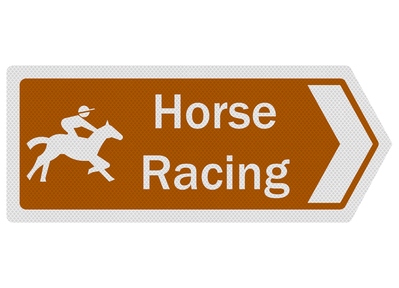 A fairly common strategy for each way betting punters is to reinvest the money that they would receive from the place pot into the win pot. They do this as more often than not place returns don’t offer huge returns, but it can be used as insurance for your bet.
A fairly common strategy for each way betting punters is to reinvest the money that they would receive from the place pot into the win pot. They do this as more often than not place returns don’t offer huge returns, but it can be used as insurance for your bet.
You need to be able to work out the place bet before you make your initial bet. The plan is to then reinvest any winnings from the stake money into the win market to maximise returns. It’s worth noting that you need to adjust your overall stakes based on whether a bet will lose as well.
For example, let’s say you place a £20 each way bet on a horse priced 10.00 in a race paying ¼ odds for a place. We know that ¼ of 10.00 is 2.50 and multiplying that by £20 gives us £50. Remove the stake, and this gives us a £30 net win.
We are now going to stick that £30 net win onto the horse to win at odds of 10.00. Note that this is on the win only market and not an each way bet.
As it stands, we have:
- £20 on the win as part of each way bet at odds of 10.00
- £20 on the place as part of each bet at odds of 2.50
- £30 on the win at odds of 10.00
- Total liability = £70
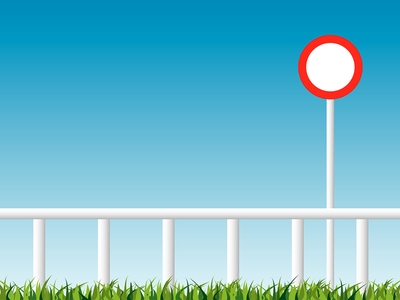 If the horse wins we get £200 back from the win as part of each way and £300 back from the single win, plus £50 from the place market. This equals £580.
If the horse wins we get £200 back from the win as part of each way and £300 back from the single win, plus £50 from the place market. This equals £580.
If the horse places, we get £80 from the place bet, but we lose the £30 bet and the £20 bet for the win, giving us a £30 return. If the horse fails to place then we lose all three bets.
The idea here is to reinvest the relatively little money that you would get back from place bets (in comparison to your initial stake) in order to maximise returns when your selections win. Of course, the initial outlay is higher and you have to adjust stakes where necessary to make sure you are always betting within your bankroll.
Avoid short priced favourites
 These each way bets are designed to offer you a bit of insurance and they work well with horses that are have fairly long odds but still have a chance of winning, albeit and outside chance.
These each way bets are designed to offer you a bit of insurance and they work well with horses that are have fairly long odds but still have a chance of winning, albeit and outside chance.
When you take on short priced favourites on the each way market it really offers very little value.
For example, let’s say that you bet each way on a horse that was priced 2.00. This would mean, assuming the bet pays ¼ odds, that you would be getting odds of 1.25 on the place bet, so a £10 bet returns just £2.50 net win and it’s hardly worth it. For these bets, you are usually better off just betting on the nose to win.
Target higher places and promotions
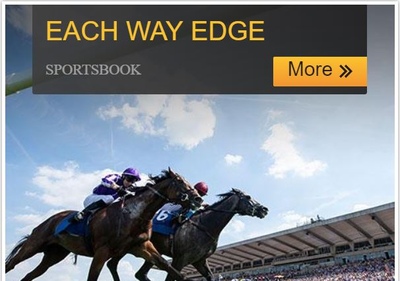 Bookmaker will usually offer a wide range of bets and promotions throughout some of the bigger horse racing meetings. These might include the likes of Royal Ascot, Cheltenham Festival, Grand National, Glorious Goodwood and so on.
Bookmaker will usually offer a wide range of bets and promotions throughout some of the bigger horse racing meetings. These might include the likes of Royal Ascot, Cheltenham Festival, Grand National, Glorious Goodwood and so on.
A promotion that many people overlook is that of enhanced places for each way betting. Some can be an increased number of places paid, others can be the percentage they command from the original starting price. The greater the number of places and the better these percentages are, the more money they are going to be worth to you.
A common offer is 1/3 of the price took as opposed to 1/5. On a horse that is priced at 12.00, this means that the odds will be 4.00 for the place at 1/3 and just 2.40 for a bookmaker that is offering 1/5 the odds.